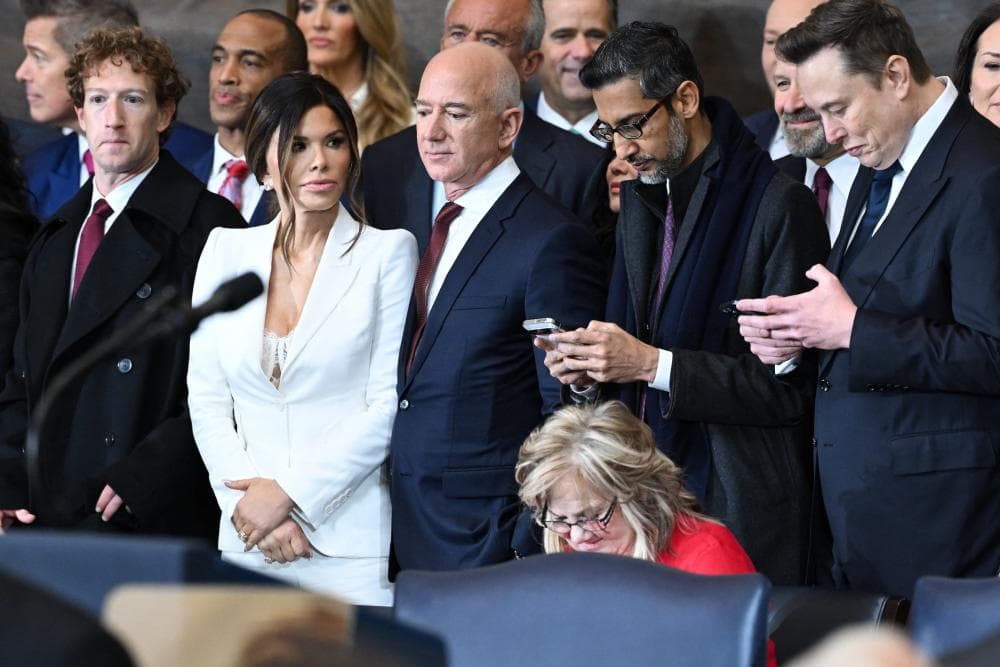We're loading the full news article for you. This includes the article content, images, author information, and related articles.
An Oxfam America report detailing soaring wealth for the top 1% in the United States provides a stark parallel to Kenya's own struggles with economic disparity, raising critical questions about taxation and social safety nets.

NAIROBI – The collective wealth of the top 10 American billionaires surged by an estimated $698 billion in the past year, according to a report published on Monday, 3 November 2025, by Oxfam America. The findings highlight a deepening wealth divide in the world's largest economy and cast a spotlight on similar, pressing debates over economic inequality within Kenya.
The report, which analyzes the growing gap between the ultra-wealthy and the general population, argues that such extreme wealth concentration is a direct result of policy choices. "Inequality is a policy choice," stated Rebecca Riddell, senior policy lead for economic justice at Oxfam America. "These comparisons show us that we can make very different choices when it comes to poverty and inequality in our society."
Using data from the U.S. Federal Reserve spanning from 1989 to 2022, Oxfam researchers calculated that the top 1% of American households gained 101 times more wealth than the median household over that 33-year period. This translated to an average wealth gain of $8.35 million per household for the top 1%, compared to just $83,000 for the average household. The report further notes that the wealthiest 1% of Americans held over 30% of the country's total wealth as of early 2024.
The analysis also paints a grim picture of poverty, noting that over 40% of the U.S. population is considered low-income. When compared with 38 other high-income countries in the Organisation for Economic Co-operation and Development (OECD), the U.S. has one of the highest rates of relative poverty and the second-highest rate of child poverty.
While the Oxfam report focuses on the United States, its findings resonate deeply with Kenya's economic reality. According to data previously released by Oxfam, extreme inequality is rampant in Kenya, where less than 0.1% of the population—approximately 8,300 people—own more wealth than the bottom 99.9%, who number more than 44 million people. This stark disparity exists despite years of consistent economic growth, suggesting the benefits have not been shared broadly.
Data from the Kenya National Bureau of Statistics (KNBS) has also highlighted this trend. A 2023 report indicated that the richest quintile (top 20%) of the population accounts for 42.2% of total consumption, while the poorest quintile accounts for only 7.4%. The number of super-rich individuals in Kenya is projected to be among the fastest-growing in the world, with forecasts predicting an 80% increase in the number of millionaires over the next decade.
The economic policies of the United States, particularly the monetary decisions of the U.S. Federal Reserve, have significant ripple effects on the Kenyan and East African economies. U.S. interest rate policies influence the strength of the Kenyan shilling, the cost of servicing dollar-denominated public debt, and the flow of foreign investment into the region. When the U.S. central bank adjusts its rates, the Central Bank of Kenya often aligns its own monetary policy, affecting borrowing costs for local businesses and consumers.
The concentration of wealth in the U.S. also shapes global investment patterns and the priorities of international financial institutions. The Oxfam report's call for systemic reforms—including progressive taxation, strengthening social safety nets, and protecting workers' rights—mirrors ongoing policy debates in Kenya surrounding the Finance Act, public debt management, and funding for essential services like healthcare and education. Oxfam has previously noted that Kenya loses an estimated $1.1 billion annually to tax exemptions and incentives, a sum nearly double the national health budget in some years.
The report concludes that the dismantling of public systems, regressive tax codes, and weakened worker protections have allowed concentrated wealth to translate into concentrated power, a phenomenon observable in both developed and developing nations. Both Republican and Democratic administrations in the U.S. have overseen policies that exacerbated the wealth gap, a cautionary tale for nations like Kenya navigating their own economic development paths.
As global and local economies continue to grapple with the high cost of living and unequal distribution of resources, the Oxfam report serves as a critical data point. It underscores that the challenge of inequality is not a matter of fate but of deliberate policy choices that have far-reaching consequences, from Washington D.C. to Nairobi. The debate it fuels is not just about the immense fortunes of a few but about the economic stability and social fabric of nations worldwide.
Keep the conversation in one place—threads here stay linked to the story and in the forums.
Other hot threads
E-sports and Gaming Community in Kenya
Active 7 months ago
Popular Recreational Activities Across Counties
Active 7 months ago
The Role of Technology in Modern Agriculture (AgriTech)
Active 7 months ago
Investing in Youth Sports Development Programs
Active 7 months ago